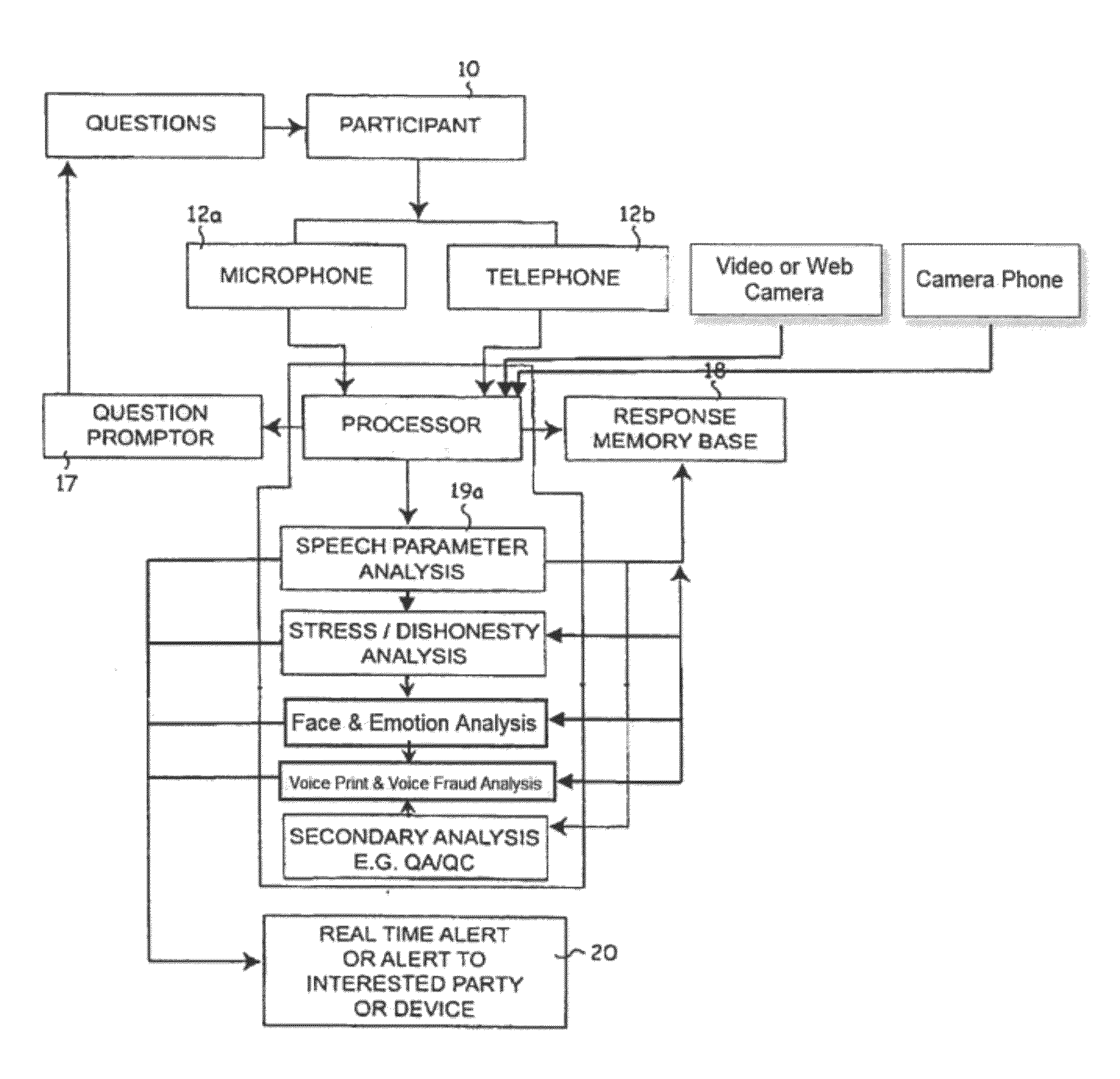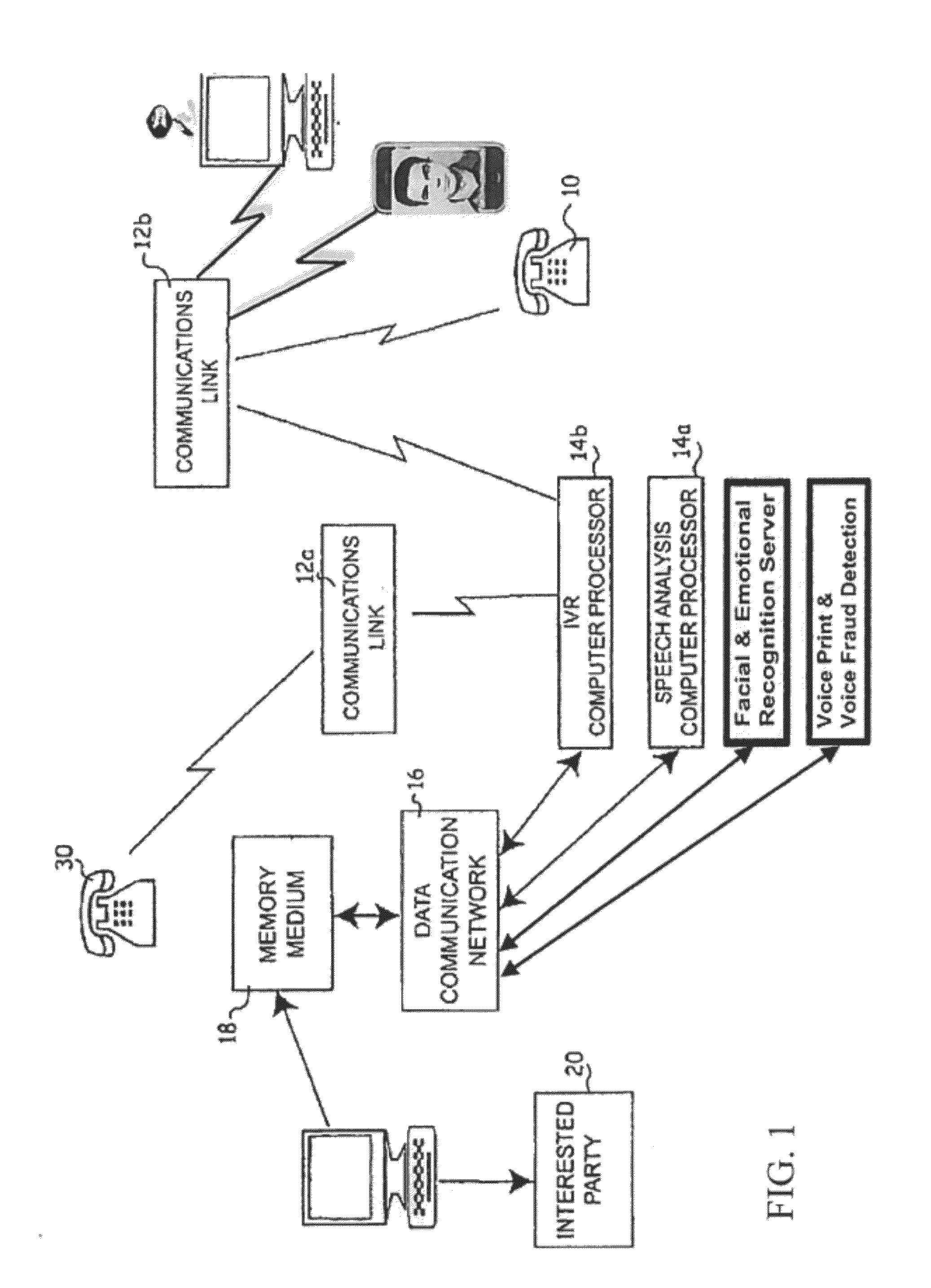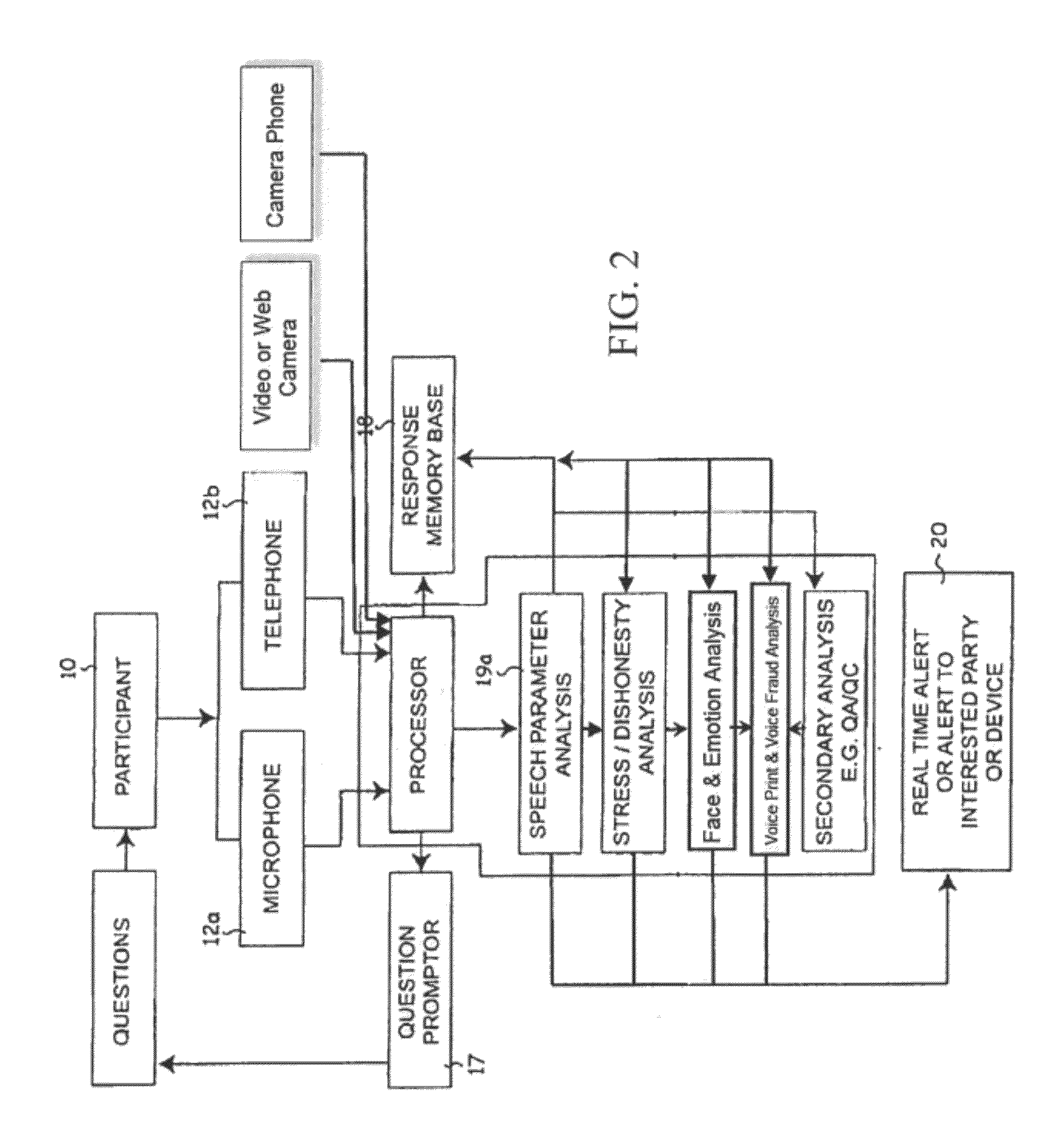User intent analysis extent of speaker intent analysis system
a speaker intent and intent analysis technology, applied in the field of information processing, can solve the problems of not providing any analysis, not assessing the credibility of callers or screeners, and dampening of selected frequency variations, so as to achieve the effect of reducing labor and expense, and processing facial expressions quickly and remotely
- Summary
- Abstract
- Description
- Claims
- Application Information
AI Technical Summary
Benefits of technology
Problems solved by technology
Method used
Image
Examples
example 1
[0079]The present invention has almost unlimited uses. For example, in a first practice of the invention, the speaker intent analysis system is used to screen persons applying for life insurance. To this end, a person calling the insurance company on the phone is fed a series of computer produced questions to calibrate the person's voice for credibility assessment. The preliminary questions may include, for example, a request for a person's name, address, phone number, billing information, and the nature of their call. Thereafter, the computer uses speech recognition software to determine the nature of the call and selects a series of questions from its database relating to the caller's inquiry or based upon the embodied design of that application. For example an inquiry for life insurance might result in the computer selecting questions relating to the caller's age, sex, health, smoking and drinking habits, etc.
[0080]The speaker intent analysis system's computer collects the answer...
example 2
[0082]As a second example, the speaker intent analysis system is used to collect and assess worker's compensation claims for job-related injuries. Typically, the claimant must report periodically over the phone to the insurance company as to the status of his injury and status of the efforts for rehabilitation, including identifying his recent visits to doctors and therapists. To this end, the claimant calls a phone number which directs his call so as to be controlled by a computer. A series of questions are asked. These questions may include preliminary questions so as to provide a baseline, or calibration of the claimant's voice. For example, these questions may include: (1) the cause of the injury; (2) whether the injury still exists; (3) whether the claimant is able to work; (4) whether the claimant has collected any unreported income or income from another source; and (5) whether the claimant has worked during the period of collecting worker's compensation. The voice patterns m...
example 3
Insurance Claims
[0084]As an additional example of the speaker intent analysis system of the present invention. An insured patron calls to report a claim and engages the speaker intent analysis system (S.I.A.S.) in automatic mode. An automatically initiated conversation may proceed as follows:[0085]S.I.A.S.: Please state your name and policy number.[0086]patron: John Doe, Number 9872357.[0087]S.I.A.S.: Are you calling to report a claim?[0088]patron: yes[0089]S.I.A.S.: Are you medically injured?[0090]patron: yes[0091]S.I.A.S.: Please state the extent of your injuries known to you at this time.[0092]patron: I have a fractured right arm and bruising on the right side of my body.[0093]S.I.A.S.: Does this claim regard damage to a vehicle, residence, or other? If so, please specify any identifying characteristics such as injury, or make and model, VIN number, or complete address of the residence.[0094]patron: Vehicle, Honda Prelude, 1995, VIN Number WU62343198.[0095]S.I.A.S.: Please speci...
PUM
 Login to View More
Login to View More Abstract
Description
Claims
Application Information
 Login to View More
Login to View More - R&D
- Intellectual Property
- Life Sciences
- Materials
- Tech Scout
- Unparalleled Data Quality
- Higher Quality Content
- 60% Fewer Hallucinations
Browse by: Latest US Patents, China's latest patents, Technical Efficacy Thesaurus, Application Domain, Technology Topic, Popular Technical Reports.
© 2025 PatSnap. All rights reserved.Legal|Privacy policy|Modern Slavery Act Transparency Statement|Sitemap|About US| Contact US: help@patsnap.com



